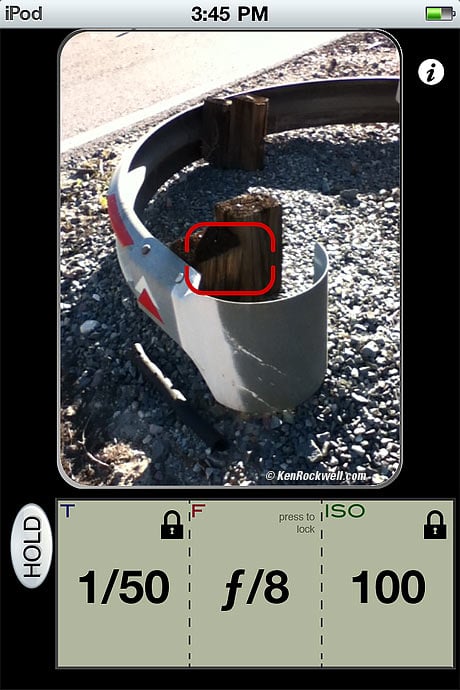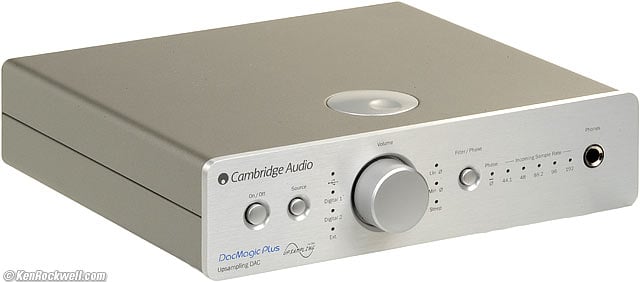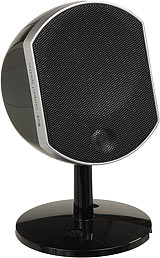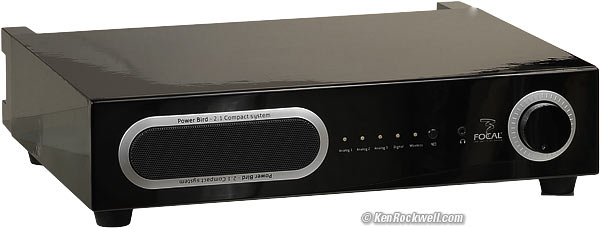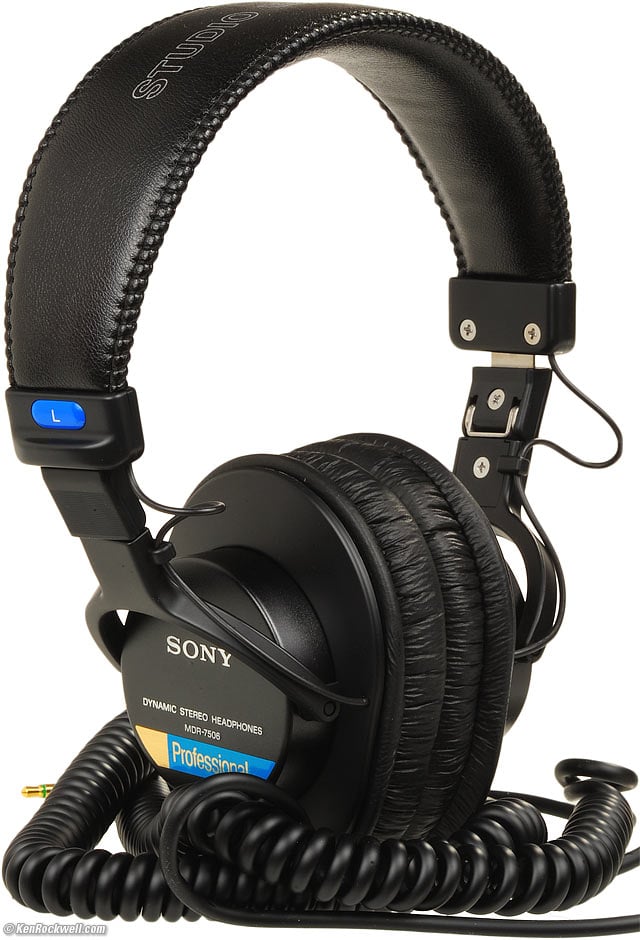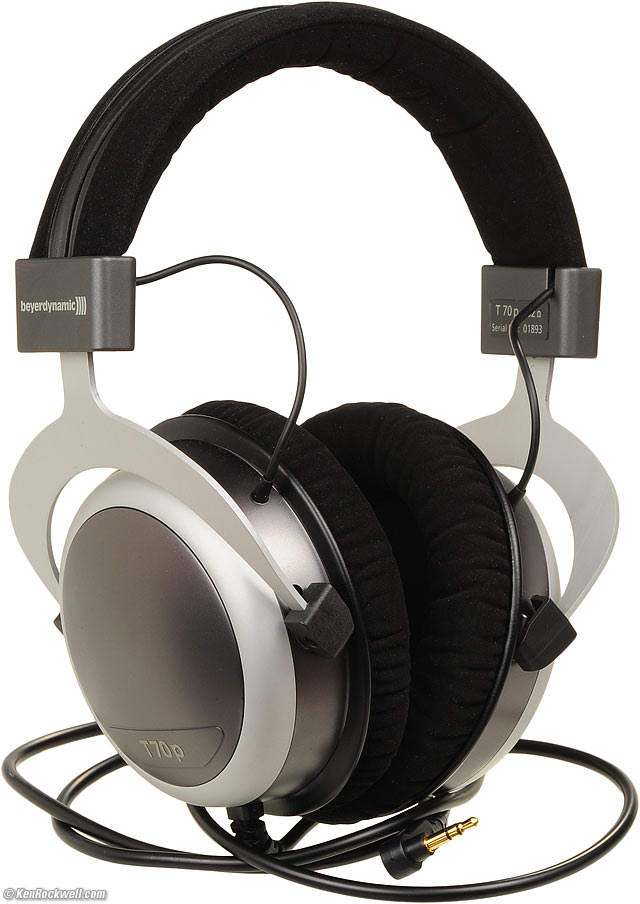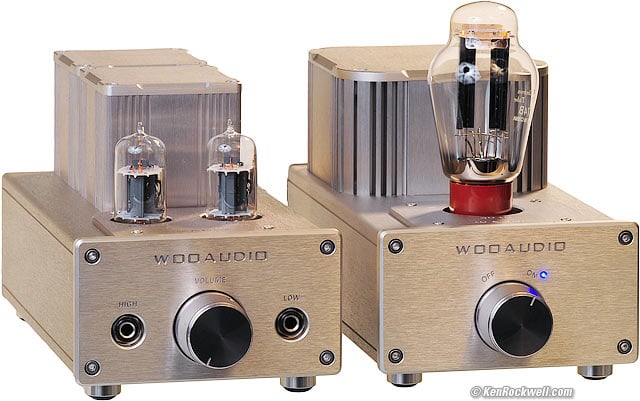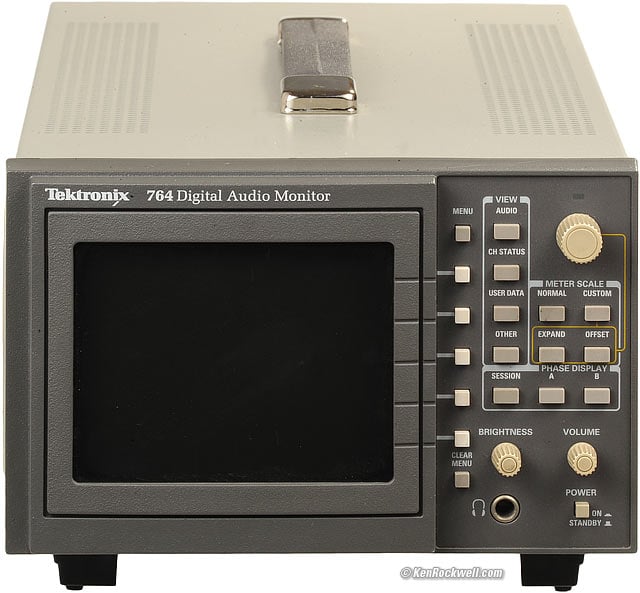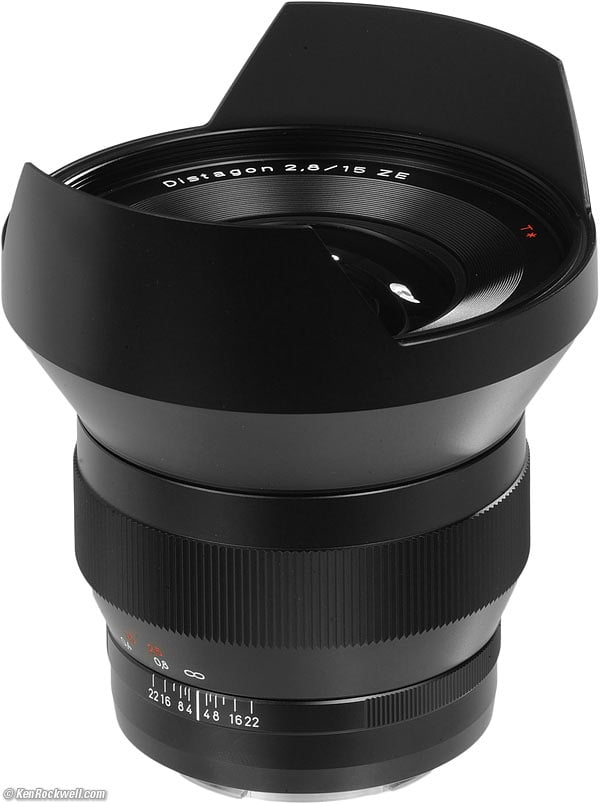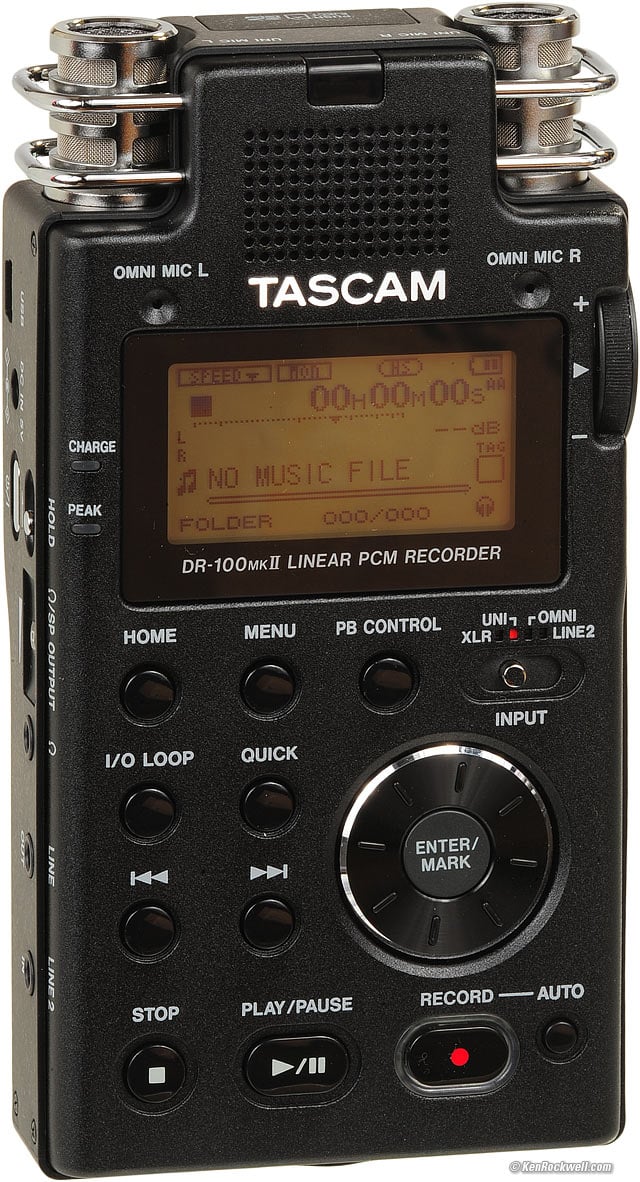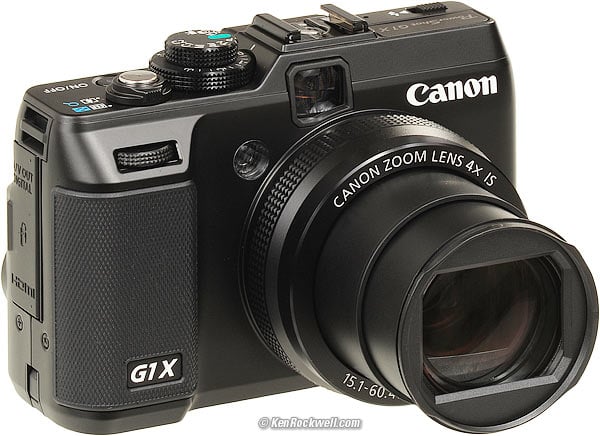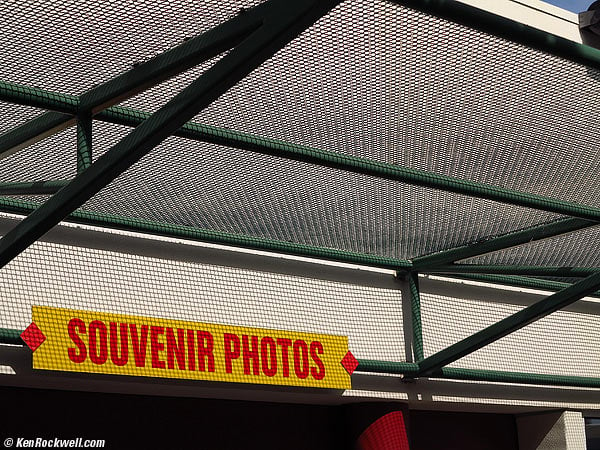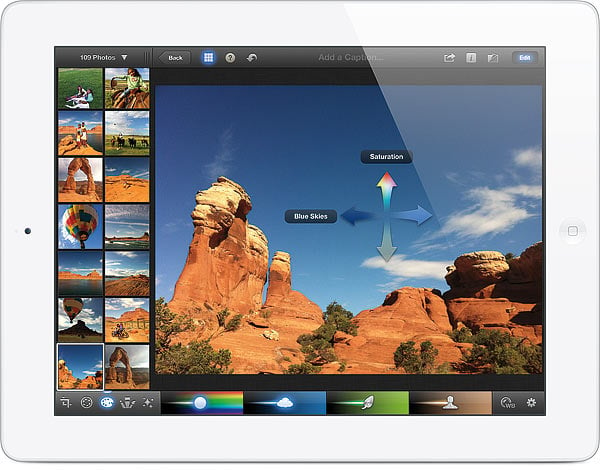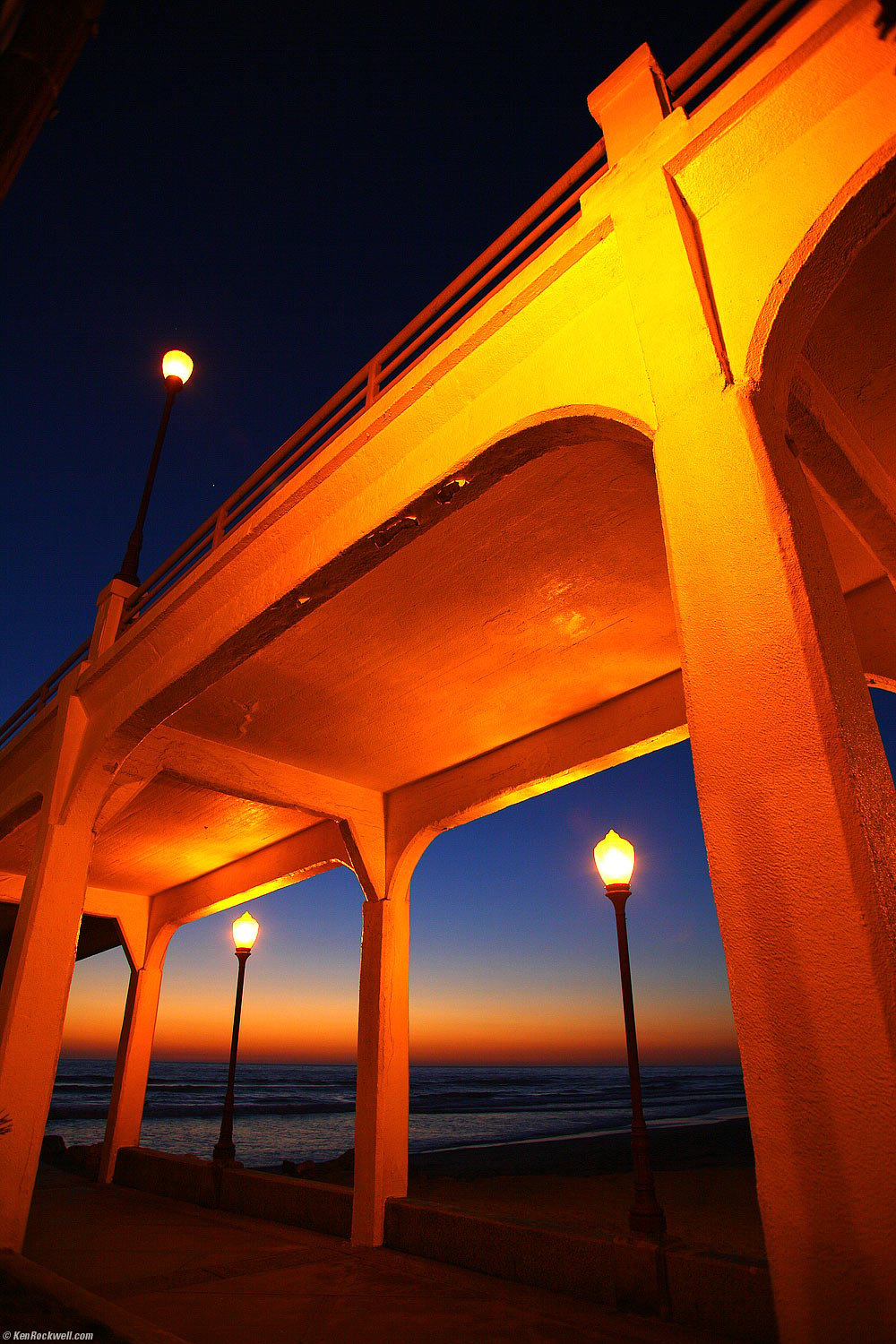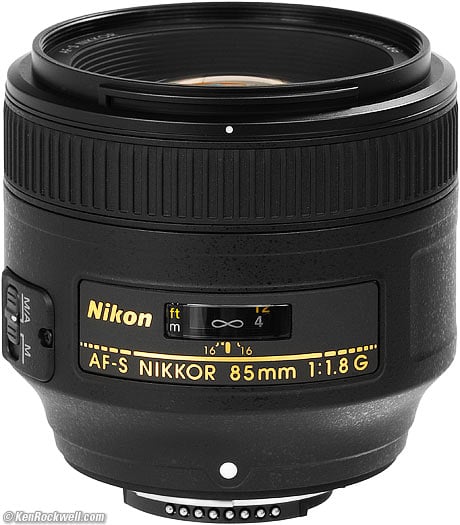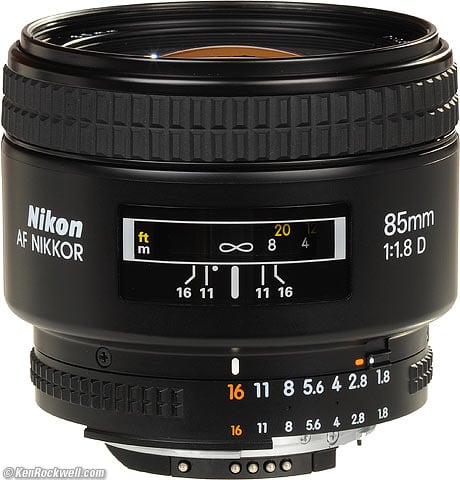Home Donate Search Gallery Reviews How-To Books Links Workshops About Contact
March 2012's News Hot Deals
RSS: daily (continuous live updates)
all © 2012 KenRockwell.com. All rights
reserved.
Nikon: D800 Canon: 5D Mk III X100 LEICA More random Ryan Katie
Recommended Cameras How to Take Better Pictures
VOTE: Vote on my Photo Contest - FREE!
Twitter Facebook Video Tutorials
|
Adorama pays top dollar for your used gear. I use these stores. I can't vouch for ads below. |
29 March 2012, Thursday
Canon 5D Mark III
Canon 5D Mark III and 100mm f/2 USM.
NEW: Canon 5D Mark III Review.
World's best DSLR ever.
Scanning Deal
Only for you readers and only for new customers: 21% off ScanCafe photo, slide, negative, and video scanning!
Use code ROCKWELL21. Not valid in combination with any other offer, or with value kits, or gift cards, or gift boxes, or photo restoration. Expires May 31, 2012, and is valid only for new customers.
28 March 2012, Wednesday
AA Battery Deal!!!
Here's a special deal just for you folks: the commemorative "Glitter" version of Sanyo's superb eneloop, for just $19.99!
See my eneloop review; these Glitter cells are rated 2,000 mAh (mine usually test at much more than this), and Sanyo rates them for 1,500 charge/discharge cycles, and three years of standby life!
Who hoo! This deal starts in about an hour at 2PM NYC time.
Clever Camera Support on Sale
HandlePod Hand-Supported Camera Stabilizer: Reg. $39.95, Special at $29.95.
DSLR Pro Video Optical Finder on sale
Zacuto Z-Find-Jr Optical Viewfinder: Reg price $251.75 Coupon price 176.75; use coupon code S9876543 on checkout. (wait till 2 PM NYC time for it to go live.)
27 March 2012, Tuesday
Oh my golly: D800
Here's a press release from DxO that just came in over the wire. I hope you've already got your D800 before the price goes completely out-of-sight.
While everyone uses me as the gold standard for practical, real-world results, DxO is the reference for very serious laboratory results. Their tests read what a sensor does, but how well it works as part of a system is another story.
Yes, DxO labs are 100% commercial, but they make their money selling their image-processing and analysis expertise to where the real money is: camera-phone and industrial camera makers, and do all this camera testing and publishing as a publicity stunt to get guys like us who work at these places to know about their abilities. You don't see any ads on their site except for themselves; they aren't schlock houses like this and other photo websites.
Here is the press release verbatim, without my usual added commentary:
March 27, 2012 – DxOMark, the reference web site for camera image quality testing, has released its in-depth analysis of the new Nikon D800, as of now the best camera ever tested by DxOMark in terms of image quality.
Incredibly, the Nikon D800 even surpasses the best medium-format cameras, which are priced more than 10 times higher! The Nikon D800 comes out almost 1/3 of a stop higher than the best medium-format camera scored on DxOMark, the Phase One IQ180, which features a double-surface sensor and more than twice the pixel count (36 vs. 80 Mpix).
“The new sensor featured in the D800 achieves the best dynamic range and the highest color sensitivity ever measured, taking the lead on the DxOMark scale with 95 points,” explained Dr. Frédéric Guichard, DxO Labs’ Chief Scientific Officer. “This camera illustrates the consistent improvement that digital camera manufacturers have been able to achieve in the last few years, mimicking Moore’s law that has ruled the silicon industry for decades now.”
Mining DxOMark data, one can see the amazing progress of sensor performance over the past decade, from the Canon 1Ds released in 2002 with a DxOMark Score of 63, to the Nikon D3 and the Canon 1Ds Mark III, which both reached a DxOMark Score of 80 in 2007 (+17, i.e. approx. one stop in sensitivity), and now the D800 that adds the equivalent of one more stop in sensitivity performance with a DxOMark Score of 95.
Read more at DxO, which further explains in reference to high ISO performance, that "Up until now, the sensors with the best resolution couldn't compare their low-light performances with those of the best sensors in this category (the Nikon D3s and of course the D4). Here the D800’s sensor performance matches that of the D4’s!" In other words, the D800 matches the high-ISO performance of the D4, and exceeds its color depth and resolution and everything else.
DxO is testing the sensors' raw data, not the AF systems, ergonomics or camera's internal image-processing. Image processing is where all the high ISO noise is cleaned up and was not tested as part of the sensor's performance. If you're shooting raw, your noise performance will differ based on the software you use, and if you're shooting JPG, the camera's software will alter the results you get, since that's not part of DxO's testing. DxO is looking at raw results, not the results after the camera smears over the noise.
DxO is saying that what comes off the D800's sensor is the best, cleanest, purest image ever to come from any digital camera, even medium format backs, regardless of resolving power — and the D800 has the highest resolving power yet of any 35mm-sized sensor, and more than many medium format systems.
Is it time to say goodbye to Hasselblad and Phase One and Mamiya digital? (Film is forever.) Is whatever they used to offer beyond technical image quality, like weird file formats, clumsy hardware, short battery life and mediocre ergonomics, going to save them? Is it time to unload your studio's cabinets now, while you still can?
Just be sure to shoot the very best 35mm lenses if you're going head-to-head against medium format. Much of medium format's allure comes not from the sensors, but the always superb lenses, like Zeiss, used with it.
Will Medium Format digital ever catch up?
Probably not.
Medium format digital has been coasting on its film laurels for the past 15 years.
10 years ago, 35mm-based digital was awful. It still wasn't full-frame, and was only good enough for newspapers, not for commercial catalog or even professional wedding work.
10 years ago, medium format digital was OK, and with the more primitive technology of the time, its mechanical advantage of bigger sensors helped it stay ahead of 35mm-based sensors, that were still smaller than 35mm film. Medium format cameras usually used Kodak sensors, and whatever DSP they could get to go with it. With these big, old sensors, analog signal levels from the sensor were strong enough that sloppy amplifier and sample-and-hold design was good enough to out-do Nikon and Canon's best attempts.
A month ago, medium format was still with us because the guys who used it exuded a bit a caché by having a "professional" camera instead of just a Canon or Nikon like their clients' kid's girlfreinds own.
Today, Canon and Nikon each have pretty much unlimited budgets to develop cameras and sensors, while medium format makers don't have much at all by comparison. They used to get by by inertia from earlier years, but today, only Nikon and Canon have the budgets — and Canon custom makes their own sensors — to stay competitive.
Medium format backs have never had the high ISO capacity, I presume from inability to have the secret sauce that lets Canon and Nikon pull the weak analog signals off their sensors so cleanly. It's not the sensor that's sensitive, it's the way that the amplifiers and analog signal processing and grounding schemes and A/D converters all work together. This is what DxO is testing.
Now that Nikon can pull cleaner signals from its D800 sensor, and that the D800 sensor has just as much resolution as medium format, I strongly doubt that any medium-format maker will be able to keep up. They just don't have the engineering resources of Nikon or Canon, and never did.
LEICA is even worse: they have such little budget, they have to farm-out their DSP design to third parties.
Where forth the LEICA?
You still need a lens. No one makes wide, fast-wide and ultrawide lenses as good as LEICA. WIll the D800 be able to out-do the LEICA M9? Only if I can find good enough lenses for the D800, which for wide-angles, I doubt.
Is 4x5" still relevant - YES!
As pros always said, people pay thousands of dollars for a Hasselblad because it positions its lenses so precisely parallel to the image plane, while others pay thousands of dollars for view cameras precisely because they can set their lenses at any random angle to the film plane!
4x5" has never been about resolution. We have 8x10" and larger formats for that, even though of course even 4x5" smokes every digital format technically, with about 256 MP when scanned at only 5,000 DPI!
The real reason we shoot 4x5" is because every lens and camera lets every lens be a tilt and shift lens. There's no way to get perfect resolution unless something is in perfect focus, and the only way to get perfect focus of something that isn't perfectly parallel to the image plane is to tilt the lens or image plane until it is!
Even with a shift lens, you can't see as much through a Nikon viewfinder or 3" Live View LCD as you can on live ground-glass and a loupe. Jack Dykinga recently wrote that that's why 4x5" remains relevant: you can't really see what you're doing to create and optimize an image with smaller-format backs or SLRs.
On top of that, any resampling to remove distortion in firmware or later in software softens images. With 4x5," our lenses, like LEICA, don't distort, and we shift them to correct keystoning and make everything parallel before we take the picture.
Medium format is just overgrown 35mm (relatively fixed lenses and finders), while large format is the instrument of the immortals. No one pays much attention today to Ansel Adams' most recent work, which was only shot on medium format.
Canon 5D Mark III Free Samples
I've got Sharpness and Hyper-ISO sample images up at my Canon 5D Mark III Review. I even have a sample of the superb quality available at the SMALL (5.5 MP) JPG NORMAL setting, which is how I snap all my kid pictures with my 5D Mark III.
Free image samples, anyway.
I don't get any free cameras; heck, even I don't have my D800 yet. Contrary to popular misconception, I don't get any free cameras or special treatment — I don't get jack. It keeps me honest.
The best light meter is the one that's already in my pocket: The Free Pocket Light Meter App.
Better than real light meters, it lets me preview the effects of exposure, highlight and shadow long before my film is developed.
I only use it with my real cameras; my "digital" cameras have meters built-in and auto exposure.
More suggested photo apps.
26 March 2012, Monday
Nikon D800: The World's Best Sensor
Or so says DxO Labs, the best source for unbiased scientific camera measurements. The D800 is even better than medium-format cameras like the Phase One P65+ and better than Hasselblads, as tested by DxO.
The Nikon D800 has greater dynamic range, often deeper color depth and always better high ISO performance than the old five-figure medium format cameras. The P65+ sold for more than most new Mercedes - before the D800 came out.
I told you the D800 is a game-changer. Nikon tried to screw us — and lost — with the D3X, and now with the D800 at just $3,000 they're trying to make it up to us. I sure hope you've got your D800s on order before any price increases roll their way to your country — Nikon's now got more steam to do this now that the D800 is proven to replace today's klunky old medium-format backs.
You'll need killer lenses to out-do medium format. One advantage of larger formats is that they are pro-only, so there are no crappy Sigma or Tamron lenses for them, and all the camera-maker lenses are extraordinary, unlike in 35mm.
For your D800, try the 24/1.4, Voigtländer 40/2 ASPH, Nikon 55/2.8 MICRO-NIKKOR or 60mm f/2.8 G MICRO-NIKKOR, 105mm VR and 200mm AF-MICRO-NIKKOR for the most insane results, and don't shoot any smaller than f/5.6.
Should I even bother writing the 5D Mark III review I'm creating in the background right now? Will Canon have to up the ante with a 41MP 5DX? I'm serious; Canon used to rule the landscape and portrait markets with it's always superior 5D franchise, but with Nikon now having just lapped them from out of nowhere, who knows?
Big Tiny Card Deal
SanDisk 64GB Mobile Ultra microSDHC, up to 30 MB/Sec, Enabled Class 6 Memory Card with SD Adapter: Reg price $139.95, now on special $79.95.
In case you were curious, these words and the mouse clicks required to bring them to you are coming from Sanyo Eneloop AA cells, specifically, the commemorative "Glitter" versions that my kids keep trying to take from me.
I'm using these in my Apple Magic Mouse and my Apple Wireless Keyboard.
The Eneloop are awesome: they run forever on a charge, and most importantly, unlike old-style rechargeables that ran down even if you don't use them, the eneloop are always charged, even if it's been years since I charged them.
In any case, they work great in my two wireless Apple products for a couple of months at a time, and when they get low, I swap them for the set I charged two months before.
I couldn't do this with regular rechargeables, since after two months, regular rechargeables would be mostly dead. I'm not going to wait 2 hours to get back to work, or let my schedule be dictated by a battery charger, so the eneloop make this a reality.
Presumably driven by the need for increased capacity in the women's personal care market, Sanyo now offers an increased-capacity version, aptly labeled "XX."
I rarely ever can run down my 2,000 mAh regular eneloop, but if you can, these new XX eneloop are rated at 2,500 mAh.
I use the 2,000 mAh version in my flashes and everything, and because they don't run themselves down sitting idle, I've never run down a set! I recharge them after several months just in case, but for you full-time pro event and news photographers who shoot enough to run down batteries, here you go.
Once you buy any eneloop, it's highly unlikely you'll need to replace them. The 1,450 mAh AA Sanyo Ni-MH I bought back in 1999 to use with my Nikon F100 and SB-23 still work as well as they always did, just that they always self-discharged.
B&H still sells the Nikon F100 brand-new!
Canon 5D Mark III and 100mm f/2 USM.
I've been shooting mine all weekend. I've got a ton of notes, and now that I'm back in the studio to see what happened, I'll be reporting all day.
As expected, stupid-high ISOs like ISO 25,600 work, but look crummy. As expected, they're soft and smeary. They look exactly like ISO 3,200 from point-and-shoots: usable, but soft and smeared in firmware to hide the noise. In other words, with the right post-processing software, you'll get the same results and can get the same stupid-high ISOs from the older cameras by push-processing.
Real photographers don't need ISO 6,400, much less ISO 12,800. Photography means drawing with light, not darkness.
If it's too dark, turn on some lights!
No matter how many ISOs you have, without light, it's going to look crappy anyway.
And on top of that, if the light's dim, use a fast lens, not an f/2.8 zoom! The 50/1.8 is a much faster lens than the 24-70/2.8, and sharper, too — for just $120. f/2.8 is slow, for daylight use. My 50/1.8 is my favorite lens for my 5D, 5D Mark II and now 5D Mark III: small, light, fast, sharp, and disposable. (you rich guys, who are most Mark III owners, probably prefer the 50/1.4 or 50/1.2.)
In any case, if the light's dim, turn on some light or use a faster lens. Higher ISOs are never the answer, but the 24/1.4, 28/1.8 or 85/1.8 certainly are. Save $1,300 and get a 5D Mark II instead, and use the $1,300 to get a couple of real lenses to supplement your f/2.8 zooms. How sad it is that people have completely forgotten how to be photographers, which means to master light, not be a slave to the darkness.
Anyway, the 5D Mark III's AF system, stolen from the Canon 7D, is just more complex than the original 5D and the 5D Mark II, and the original 5D stole it from the 20D or similar, so it always was too small for full-frame. At least the AF areas for the 5D Mk III now fill a good part of the frame, but they no longer are well-lit by individual LEDs as they were in the 5D and 5D Mark II. The 5D Mark III AF zones are only shown as dark LCD boxes covering your subject, and at night, lit poorly by an LED at the side. Poo; now the dark rectangles get in the way of trying to see when the subject smiles.
The new AF system takes a few days to figure out, and once I have, it seems like Canon has added so many tweaks to it that we now have one more level to have to sort through for every shot - oh oh.
The auto color-fringe correction works great!
So, yes, the Mark III is better than the Mark II, but if you actually work for a living and the extra $1,300 means something to you, get the Mark II while you still can and put the money into some fast lenses. DSLRs are a rich man's sport, and most of you guys are doing OK, so if you have the dough, of course get the Mark III. The color-fringe correction is a big deal for me for use with Canon's ultrawide lenses; you can see the difference in real pictures, unlike this high ISO or high megapixel baloney, which you can't.
As always, only you can answer Is It Worth It — to you. If you earn your living with it, it is. If not, it's a toy, so it's a question of how much cash you've got to throw at this hobby, The 5D Mark II is still a superb camera, better than anything from Nikon — until the D800 came out. Even the original 5D is better technically than anything from Nikon under $8,000 or the D800, and used 5Ds go for about $1,000, total. The worst thing about the original 5D are its crappy ergonomics and hideous LCD; its images are spectacular.
D800 or 5D Mark III? My D800 isn't here yet so I'll let you know, but having the 5D Mark III and seeing how Canon still hasn't fixed the complete playback lockout until you hit the play button defect, and seeing the crummy black AF squares all over the finder in the 5D Mark III, you know I'm going to be all over the D800, regardless of price; and the D800 costs less!
Forget ISO differences; the stupid-high maximum ISOs look a lot worse than the less crazy highest-ISOs of higher-resolution cameras. It's all marketing why the ISO settings go higher on lower-resolution cameras, not noise. It's also that it takes too much processing to get all the smudging required at hyper ISOs with more pixels, but you can do it later. In other words, even though some cameras can be set higher, they look so much worse than the other cameras set to their (lower) maximum ISOs.
I already showed this with the D3X years ago. Noise depends not on pixel-well size, it depends image magnification. Bigger sensors need less magnification to a given image (print or screen) size. It's the enlargement ratio, not the pixel well size.
24 March 2012, Saturday
Nikon Wanks UK Customers
As I predicted a month ago, but about which I was too lazy to write, is that Nikon, seeing how popular is the D800, and seeing how Canon announced the 5D Mark III the next month at a higher price for less camera (as far as still shooters are concerned), has decided to raise prices, starting in the UK.
I'm glad I ordered mine two months ago.
Nikon announced the D800 two months ago, and Canon announced the 5D Mark III only a month ago, but I have my 5D Mark III in my hot little hands, while the D800 is still a couple of days out for me.
Canon always delivers faster than Nikon; Nikon likes to make us wait, while LEICA prefers we suffer. (LEICA M delivery times are forever, and I can say "wank" because it's not a bad word here in the USA — nor is "Free Willy," "Jolly Roger," or the world's best pizzeria right here on Long Island, the full Villa Monty.)
Nikon had no good excuse other than revenue optimization. The poorly disguised excuse given for the price rise was a "systems error," which of course if it actually was, would have set the price at £hU7&7&^%H, not an actual number, much less one anywhere conveniently a few hundred less than the raised price. In this case, the "system" wasn't a computer system, but the human process through which prices are optimized. Many people at Nikon spend a lot of time arguing over this in meetings before prices are set, and in this case, they got skunked by Canon, so raised the price later.
No big deal, unless you're waiting around to order your D800 until after I show how great it is at high ISOs.
Canon 5D Mark III
My 5D Mark III just arrived, and I'm all over it. Great news: it takes the same batteries as my 5D Mark II, so I already had two fully charged batteries ready to go the instant it arrived.
First impressions are that it's the same as the 5D Mark II, just with a lot of firmware tweaks and a far more complex AF system, for an extra $1,000 ~ $1,500 over the 5D Mark II. The old Is It worth It applies: if you're rich or use it every day, it's worth the upgrade, if not, don't bother. If it was significantly different, Canon would have given it a new model number, instead of a "mark" appellation.
Yes, the lateral color fringe correction really does work, but only if the camera has a profile for your lens. It does for the 16-35/2.8 L II, which needs it, but not for the 50/1.8 or 100/2, which are so good that they don't need it (yes, the $120 50/1.8 is much sharper than the $1,500 16-35/2.8 L II).
The 5D Mk III lacks a profile for the 20-35/2.8L which does need it. I probably can download these, but I never bother. This new correction in the 5D Mark III makes a world of difference in real photos with the lenses that need it and have in-camera profiles. You will see the improvement in real photos: the color fringes go away, and this is with on-camera JPGs. You can do this later in software like DxO even with the original 5D. (all current Nikons offer this feature, but they do it with every lens from every maker with no profiles needed. Canon's solution only works for the few lenses for which the camera is preloaded, which I suppose I could load manually if I didn't have pictures to make instead with my limited time and tolerance for BS.)
My D800 and D800E still need to arrive, but from what I'm seeing of the 5D Mk III, my usual Nikon versus Canon applies. The 5D Mark III offers three instant-recall presets C1, C2 and C3, which makes it far better for multi-purpose use than any Nikon other than the D7000 (with Nikon, it takes a half-hour to reset everything for one kind of photo or another), but the ergonomics of the Canon are still inferior to Nikon, with Canon still showing some of its core incompetency in locking-out some play functions unless you stop what you're doing and and hit PLAY after each shot.
Everything about the Mark III is a little better than the Mark II, which is far better than the original 5D.
I'm still trying to learn the extremely complex AF system of the 5D Mark III. I still can't figure out a fast (one-click maximum) way to get from the auto-AF area select mode to a single selected area. I always shoot letting the camera select the AF point, and need instant override to select the point if the camera can't do it itself. Right now, I have to press the Mark III's [-|-] button and then press the M-Fn button a few times, an then move the thumb button, which is completely unacceptable unless I can find a faster way. (on Nikon, I flick a switch on the back of the camera with my thumb without taking my eye away from my subject.)
The auto AF-area select mode of the Mark III is slow, like the first Nikon D300 was. The Mark III lacks the processing power to select among these points quickly enough for action. Once a point is selected — or if you select them manually — it's fast, but not much faster than Canon's very first single-AF-point EOS650 of 1987.
It's easy to make something more complicated, like the new AF system of the Mark III. It takes far more intelligence to make it usable, a quality which only Apple seems to posses. If I can't instantly swap between AF modes on the Mark III, then the Mark II will be a better camera. We'll see.
The locking mode dial of the Mark III may also be placing another obstacle between me and my photos. One finger used to be enough to spin the dial from C1 to C2 as I snapped a scenic or a kid photo, but now the lock release button requires finger gymnastics — and I've never had problems with top dials moving by themselves.
I did always have a huge problem with the the power switch turning itself off or deactivating the rear dial on my original 5D and Mark II, and that is must assuredly fixed, finally, in the Mark III. It's a HUGE improvement, and another reason all by itself that the rich or heavy uses of the Mark II will need to upgrade.
-- pre-contact --
You've asked me to investigate all sorts of things, and what I didn't realize is that many of you are considering the 5D Mark III versus the Nikon D800.
That's kind of weird, because the choice of system is far more important than the technical sharpness or noise performance of one body versus another.
Far more important are which feels better in your hands, which handles better for you, and which company makes lenses better suited for your use.
Far more important is which body has ergonomics that suit your style of shooting. Which one gets in the way less between you and your photos?
My Canon versus Nikon page is a must read if this is you.
Ultimately when I do my shootouts, I doubt that either the 5D Mark III or D800 are going to focus that much faster than the other or have significantly different noise at the same ISO.
The differences they will have are most likely the same overall characteristics typical of Canon or Nikon, and this is what ought to guide your purchase - not static technical performance.
If you shot Canon, it's silly to jump ship to Nikon just because the D800 and D800 E will smoke Canon's last-decade performance for resolution.
If you shoot Canon, the reason pros upgrade to Nikon is for vastly improved flash exposure control — not for pixel count.
Pros used to upgrade to Canon from Nikon for improved autofocus, but that's not been an issue since the 1990s. Pros all upgraded to Canon in the 1990s, so it's been a one-way upgrade street to Nikon since 2007's introduction of the Nikon D3. I don't know that any full-time pros go back to Canon today from Nikon, there's no compelling reason, unless they're videographers. There are a lot less white lenses on the sidelines today.
For consumers, the Canon 5D and 5D Mark II used to be far superior technically to anything from Nikon under $8,000, but that just went away with the new D800. Canon may lose their landscape shooter base back to Nikon, too, especially if Canon can't crank out some competitive ultrawide zooms.
Canon Cine Lenses
I've known Canon makes 100x zoom lenses for professional television production, but I hadn't realized that they also make lenses for Hollywood motion picture cameras (PL mount), as well as specialized EF-mount DSLR video lenses for professional (not wedding) production. These probably sell for $25,000 ~ $250,000 a pop, just like the other cine lenses.
23 March 2012, Friday
NEW: Cambridge Audio DacMagic Review.
Cambridge Audio DacMagic.
An inexpensive DAC with extraordinary performance.
NEW: Focal Bird Review.
Focal Bird speakers, amp and invisible woofer system.
A clever little system for home and desktop use — with an invisible woofer system for wife and boss approval!
22 March 2012, Thursday
Canon Deals
Canon EOS-50D and 18-200 IS: Reg Price $1,999.00, Special at $ 1,799.00, super deal for you guys: $1,599.95.
Canon EOS-50D and 18-135 IS: Reg Price $1,799.95, Special at $1,299.00, super-duper deal for you guys: $1,159.95.
NEW: Sony MDR-7506 Headphones Review.
Sony MDR-7506 Headphones.
The world's most popular professional headphones, exceptionally well suited for DSLR audio and audio-for-video monitoring, for only $129.
NEW: Audio-Technica ATH-M50 Headphones Review.
Audio-Technica ATH-M50 Headphones.
Great headphones for DSLR audio-for-video monitoring, and music and movies and travel, too, for only $160.
NEW: Beyer T70p Headphones Review.
Beyer T70p Headphones.
Ultra-sensitive headphones for fine music from portable doo-dads.
NEW: Woo Audio WA6-SE Review.
Woo Audio WA6-SE Headphone Amplifier.
An all-tube, American-made beauty of a headphone amplifier at a bargain price.
NEW: Tektronix 764 Review.
Tektronix 764.
A professional standard for decades.
Not a big deal, but since I'm referencing it in another upcoming review, I had to make a page for it.
21 March 1685, Bach's Birthday
An amazing thing about Bach's music has always been how well it translates to being played on anything: steel drums, synthesizers, and even cell-phone ringers.
This is not just because Bach was a genius. It's also because the instruments of his time for which he so often wrote, the harpsichord and organ, were incapable of note-to-note dynamics and accents. No matter how hard or gently you hit the key, the notes sound the same.
Therefore he had to write music that had something to say, even if the instruments were sterile and artificial. He had to write music with so much in it that even when played on an accordion or glass harmonica, that the message still got out. When you take a harpsichord concerto like BWV 1052 and perform it on an instrument with dynamics like the piano, the results can be astonishing. (The got its name from "pianoforte," its first name in Italian musical language for soft/loud, meaning that the magic of the invention of the piano was the ability to play each note at any volume, something largely forgotten in recorded popular music today.)
That's the beauty of crappy cameras without all this digital foolishness: when your tools are primitive, you spend your efforts trying to make something that looks or sounds good even with these limited tools, and the good results are so much better.
Better tools make it easier, and when you've got better tools, you get lazy. Great work never comes from laziness.
Working when something is important to its creator, when doing it right or not means something and when you put aside time to concentrate on it, tends to lead to better work. One of Bach's greatest works, the B minor mass, was written when music performance had temporarily been outlawed (thus Bach could concentrate), and Bach wrote it trying to impress a potential employer.
We all get good photos now and then through dumb luck, and digital lets us snap a whole lot more , but only through deliberate application can we consistently crank out better work. When you're deliberate, all this digital diddling becomes unnecessary.
20 March 2012, First Day of Spring
NEW: Fenix E05 Flashlight Review.
World's best photographer's flashlight.
iTunes Importing
Someone asked me to update my Secrets of iTunes to higher data rates, since today we have so much more storage. Heck, even iTunes has defaulted to 256 kbps AAC VBR from 128 kbps fixed bitrate AAC back in 2006.
Back in 2006 I wanted my entire music collection to fit on my hard drive, and never to have to reimport it in the future as standards and drive sizes changed.
Yes, drives have gotten bigger, but today, I want it all on my 64 GB iPod Touch.
My suggested data rates and formats still stand: 128 kbps VBR AAC for all popular music, and 160 kbps VBR AAC for any real music (true stereo recordings of acoustic music).
These were tested to be transparent 6 years ago, and that won't change.
Sure, anyone can make themselves feel important by claiming they can hear differences between 256 kbps VBR AAC and ALC, but I don't know about you, I want as much music as I can fit on my iPod. I like music, not bits, and today even with most at 128 kbps VBR AAC, only half my collection fits on my iPod.
I can't hear what's missing at 128 kbps AAC VBR, even on the reference Stax Omega II, but I certainly can hear it if an album I want isn't on my iPod.
One day, now that I have pretty good access to the Stax Omega here in New York City, I'll redo my tests and see if I can hear anything different, but I doubt it.
I also had my ears tested at NAMM in January, and to my surprise, my hearing is still perfect. All the other musicians and equipment reviewers were also having their ears tested for free by the House Ear Institute, and most of these guys have sustained pretty serious hearing loss from all that listening. Half the guys had losses falling out of the "normal" gray area, and often had very different losses in each ear, as well as very different losses from octave to octave. This is why you'll never see anyone writing for an audio magazine or claiming to be an authority sharing their hearing test results — they'd be out of business!
Not that I hear anything that you don't, but 128 kbps VBR AAC is still the ticket for me for popular music and 160k for real music, and sounds awesome like you wouldn't believe played-back on proper equipment. Even if I encode something I really like at 192k or 265k or ALC, I still can't hear any difference on the best audio gear there is.
AAC is much better than MP3. I doubt 128k MP3 as portable recorders use sounds that great, but AAC VBR sounds wonderful if you'd just listen.
Fuji X100 Filter Adapter & Hood
Here's a 3rd-party version at Amazon.
Canon AE-1 Program
Here's a new one for sale, on eBay, from a seller I know!
Pentax Deals
Pentax K-5 16MP DSLR, Black reg $1,499.95, special: $999.95.
K-5 body with lots of free extras: $1,099.95.
K-5 with with 18-55mm lens: reg $1,649.95, special $1,199.95.
K-5 with 18-55mm and lots of free goodies: $1,299.95.
Pentax Q 12MP mirrorless camera with 47mm lens, Black:
Reg $749, special $549.
19 March 2012, Monday
More Unfindables
Today I see on eBay a Nikon 58mm f/1.2 NOCT up for actual auction. I almost never see NOCTs offered in real auctions, which sell for what it's actually worth. NOCTs are often offered as Buy-it-Nows, but rarely as actual auctions. (Nikon 58mm f/1.2 NOCT review.)
Likewise, I mentioned last week in How to Find Anything that you have to be patient,and lo and behold, this week, there are now two LEICA SOOGZ adapters listed.
Green Recycling Scam
As a life-long garbage-picker and deal hunter, I may be the first person to blow the lid off a shady practice where "green recyclers" are selling e-waste to unsuspecting buyers over eBay!
What makes this fun is that they never mention on eBay that they are selling items collected as e-waste, and on their green recycling collection websites, never mention that they sell the profitable e-waste on eBay — for profit!
See my section on Researching Sellers on eBay for details and actual links. These recyclers never link to their collection sites from their eBay auctions, and never link to their for-sale items from their collection websites. I unknowingly have bought two items from places doing this.
This isn't "reselling," because people are dumping the items in the first place; the seller never had to buy the items.
These recyclers are clever: they get all the benefits of Dumpster Divers and eBay drop spots, without ever having to pay the original owner or drive around looking for pick-ups!
As even ultra-Communist Michael Moore points out in one of his movies (or maybe it was one of his books), all this recycling baloney is just that; items are collected by businesses and municipalities, but follow the trucks, and rarely is anything separated and collected as "recyclable" actually put anywhere other than the same trash pile as everything else.
All this "green" baloney popular in developed countries is just another way billionaires have figured out to take money from the general public. In this case, the "green" is money for people who know how to take advantage of opportunity. In this case, it's the gullibility of the general public, and especially intellectuals with higher incomes and better trash.
The two morals to this this story are:
1.) We need some of you attorney generals out there to require disclosures to people dumping and buying when recyclers are selling trash, and
2.) Never give anything other than motor oil and real garbage to "recyclers." Don't be duped into giving your old items for free to a commercial business parading as a do-gooding organization, give your old TVs, cameras and stereos to a real do-gooding organization like the Salvation Army, or your local eBay drop-spot for sale. Even though it's valueless to you, it's worth something to someone else. At Goodwill, they train people for new jobs by repairing your discards! Goodwill really does good.
Sir Winston Churchill
While we're on the subject of opportunity, here's one from Sir Winston Churchill:
"A pessimist sees the difficulty in every opportunity; an optimist sees the opportunity in every difficulty."
We all know people who whine about how they can't make a good picture because of whatever excuse they have, like living someplace where it's always dark and rainy, and people who always pull something good out of every occasion.
Sir Winston's observation is what separates people always worried about losing whatever crummy, abusive job they hold now, and people who make themselves into billionaires.
The world's richest man is Carlos Slim Helu of sunny México, not bit-peddler Bill Gates.
Another quote from me is that there is a business opportunity every time something ticks you off. If it bothers you, it bothers others, and if you can solve it well, you too can be a billionaire in a few years.
Heck, people thought I was nuts when I got fired from my last real job in 2003 and I told everyone that they all had the opportunity to go make millions on the Internet with nothing more than the laptops they had at work, and lo and behold, that's exactly what the Facebook kid did at exactly the same time I was telling everyone! I told everyone that the Internet had more opportunity than the railroad boom or anything, and everyone else told me in 2003 that "all the good ideas have been thought. Google's already been done, and that's it. We've missed the boat."
Nope.
There are more billions to be made in the future than have ever been made in the past. The key is that you have to take a few risks to get there; keeping whatever office job you've got today working for someone else isn't ever how you're going to get rich. The stock market is just gambling for rich people with money to burn; no one gets rich playing stocks or cards.
Facebook, like this site, was started as a goof one night in 2003, and today, the facebook guy works harder than I do, and he's a multi-billionaire kid. (I started in 1999.)
Anyone could have done it looking backwards, but looking forwards was what counted. When I was telling everyone that the Internet had unimaginable untapped potential for making billions back in 2003, everyone else kept their crummy jobs at work "knowing" that the Internet had already been tapped. The stock market, especially NASDAQ, had crashed in April 2000, and no one wanted to touch the Internet. NASDAC crashed so hard that it's never recovered; it peaked at 5,400 in 2000, and today, it's only at 3,000, and that's with all the stocks that died removed!
17 March 2012, St. Patrick's Day
Think Tank Test Drive
Think Tank is offering a free test drive of its modular belt systems. Check it out!
16 March 2012, Friday
Brand New: Zeiss 15mm f/2.8 Hands-On Review.
Zeiss 15mm f/2.8.
The Zeiss 15mm has just been announced this morning, and it's also the best ultrawide lens ever made for SLRs.
It's sharper than any ultrawide ever made by Canon and has none of Canon's usual lateral color fringing.
I'm waiting for the arrival of my D800 to compare how sharp it is compared to Nikon's best, the 16-35mm VR, however this Zeiss 15/2,8 is much sharper than any of Nikon's 14mm or 15mm lenses, and it has far less distortion than any of Nikon's zooms or the Nikon's 14mm.
I was very lucky to borrow a real production sample last week, so I already have my final Zeiss 15mm review, complete with sample images, ready for you this morning as it's formally announced.
Olympus and Pentax Deals
Adorama is having a big Pentax and Olympus Sale.
Solar Eclipse in Monument Valley, 20 May 2012
My pal Greg is going; email him if you'd like to go with him.
Nikon 8mm Fisheye
I see one for sale on eBay from one of my favorite sellers.
I'm unsure if the US State department is going to be restricting the sale of these after the D800 gets into people's hands; this combination in the hands of unauthorized individuals will be quite a 180º recon data acquisition tool.
NEW: Tascam DR-100mkII Review.
Tascam DR-100mkII.
The Tascam DR-100mkII is an improved replacement for the dinky Zoom H4n, at the same $300 price. So long as you don't really need to record four channels at once, this Tascam way outperforms and outhandles the Zoom.
15 March 2012, Ides of March
LAST DAY: Enter my Photo Contest to win an iPad - FREE!
Hi folks - we have several thousand entries.
You've got until midnight tonight (NYC time) to submit all the photos you want (no limit), so please submit your very best so I can have something tempting from which to judge. Remember, I want strong and simple — something that jumps out at me as a thumbnail image.
There are still two more weeks of voting, so please vote for the good images! To see all the images, it takes some clicking to get to the in-between pages where the best undiscovered photos lie.
Look out, only one vote per day per person. We'll weed out the cheaters when we do our final audit, but no big deal; sucky photos that get a lot of votes aren't likely to win anyway.
So please, enter some more great photos, and even if you don't enter, please vote for the best photos after looking at all of them, not just the ones on top.
Thanks!
Ken
I just got this device to look for natural gas leaks, and I was wondering if it would detect FARTs.
Plumbers and gas company guys all have these things as they're over at our new pad looking for problems. I think like my 5-year-old, so I asked if these beeped for FARTs, too. They claimed not to know! Geeze, how could they not have tried it?
I wondered what they cost, and they were cheaper than my 95mm grad filter, so I ordered one, and it arrived the next day, complete with batteries.
Yes, they detect farts like wildfire! Now we know who ejected it, regardless of who detected it.
The real question was would there be enough residual combustible gas coming off baby poop to detect? As you all know, many of us less fortunate folks use poop as fuel, so it just might work as a poop detector, too.
As soon as I thought the baby pooped one out in to her diaper, I whipped out the detector, and yes, Katie was busted!!! Like most women, she denies any poops or farts, and now we have a less invasive way to check her diapers.
My wife doesn't laugh a lot, but when we were cleaning one up and I held the detector near the chocolate pile, it went off, and my wife couldn't help but busting up laughing. She know's I'm a total science nerd, but even she enjoyed this bit of research.
NEW: JPG or TIFF scans?
A brother asks.
Aperture Tips Website
The best things about Aperture is that it doesn't require any training or plugins so I can just get my work done and get on to better things, but for those of you who get into this stuff, check out ApertureExpert.com.
NEW: How to Find Anything.
14 March 2012, Wednesday
NEW: Nikon D4X Forecast Update.
UPDATED: Canon 14mm f/2.8 L Review.
The original 14mm is now a bargain used.
Canon G1 X.
NEW: Canon G1 X Review.
I've got mine in my hot little hands, and it's the best compact digital camera ever for the sorts of things I shoot as art, but it's too slow for family photos.
13 March 2012, Tuesday
New Sonys
Sony Alpha SLT-A57 Digital SLR Camera, 16.1MP, 12 FPS Continuous Shooting, half-silvered Mirror.
11 March 2012, Sunday
Canon G1 X
I've got my Canon G1 X, and as expected, it's worlds ahead of any other Powershot ever made. Your G12 can hit the dumpster; the G1 X is in a completely different image quality class than tiny-sensored point-and-shoots like the Canon G12 or Fuji X10. G1 X files are as sharp and clean as from a DSLR or the Fuji X100. High ISO performance is the same as my Nikon D7000 — and I've got the files to prove it in my upcoming review.
Click each for the camera-original JPG file (Kid photos made as Medium as opposed to Large image size, made easy by the C1 and C2 settings of the G1 X):
Katie at ISO 1,600, no flash. Full-size.
ISO 160. (watch for shallow depth of field). Full-size.
ISO 800, hand-held at 1/30 second at 95mm (equivalent) with kids climbing on me. Full-size.
ISO 100. Full-size.
Ryan at ISO 200 with flash (watch shallow depth of field). Full-size.
My X100 still handles much faster and works in more kinds of light for better people pictures, but for travel and landscape photos, the G1 X is awesome.
Full review coming; but 99% of it is that the Canon G1 X has technical image quality identical to a DX DSLR, but with exactly the same speed-of-use and ergonomics of a traditional Canon Powershot point-and-shoot.
California Central Coast Photo Tour & Workshop
We still have a spot or two open on our California Central Coast en Plein Air photo trip, Thursday-Sunday, 12-15 April 2012.
It's some of the most beautiful landscape on earth, and we bring our own chef who prepares fresh meals for us all day as we're out shooting!
Call or eMail Dave (323) 377-7565 for registration and more information.
07 March 2012, Wednesday
NEW: New iPad 3 and new iPhoto app.
Apple's New iPad 3.
Bless Apple for its simplicity; the newest iPad is called the "New iPad," not the "iPad 3."
Adorama is allready taking orders for all 18 versions. I'm getting the regular black 64 GB version (I'd buy 256 GB if they had it), and just the regular Wi-Fi version — I'm not going ot pay extra so I can pay more to a phone company for slow data that rarely works anyway.
NEW: Photos from Olde California.
Oceanside Pier, Friday Night.
What I did this weekend, minus the good photos from my Nikon F2S.
New Photographer Link: Robert Longsdorf.
Robert Longsdorf is new to the art world, and does some pretty incredible stuff for a guy who has another very real job: he's a Las Vegas Police Officer!
Check it out. I just added him to my Artists section.
Who Knows Facebook?
You folks insisted I get on Facebook, and now that I have 4,999 friends, no one else can be added.
What do I do?
Thanks!
NEW: Nikon's D800 "Technical Guide."
This flyer is an attempt both to get people to use their cameras properly so that Nikon's excellent tech support at (800) NIKON-US doesn't get overloaded when people discover their own sloppy technique, and of course it also suggests you buy all new Nikon lenses.
Another crafty PsyOps aspect of this paper is that it implies that if this stuff matters, that the D800 is something special, instead of the truth that it's not going to make our pictures any more compelling.
Nikon's newest lenses this past year or two have been spectacular, but Nikon's Cheapskate FX lenses will work as well, used properly. The reason to buy all new lenses is if you need a larger performance envelope, for instance, if you really need f/1.4 at 24mm, instead of simply a perfectly good 24mm f/2.8.
Good news: if you do want the best, the Nikon 24mm f/1.4, for which I paid $2,200, now sells for only $1,999 at Adorama.
UPDATED: Nikon's Cheapskate FX lenses.
How to get fantastic optical quality for your D800 for just a few hundred dollars, for an entire set of professional Nikon lenses.
UPDATED: Nikon 20mm f/2.8 AI-s Review.
A perfectly swell ultrawide for the D800 and D800E.
NEW: The Best Get Better: Michael Fatali.
For the nearly 200 year history of photography, most photographers have given away a little bit of image quality in exchange for personal convenience. The image is secondary; laziness triumphs.
In the 1800's photography was large glass plates. Print from those today, and they are awesome. No contrast-robbing extra glass is needed to hold the negative in the enlarger, and the image is always perfectly flat for perfect sharpness.
Then George Eastman invented a practical way to make use plastic film instead of glass at the beginning of the 1900s, and it got much easier, even if negative flatness in printing and in shooting got sloppier. Few cameras except for Contax use vacuum backs to get decent film flatness today.
Then people started shooting 4x5" instead of 8x10" in the 1950s. People had an easier time carrying a Speed Graphic instead of an 8 x 10," and pictures were good enough for newspapers.
In the 1960s and 1970s, people got even lazier and started to shoot 2¼" Hasselblads, and they were good enough for travel - to the Moon. Even Ansel Adams downgraded to Hasselblad — and the work he did with the Hasselblad pales in comparison to his earlier work.
In the 1970s, Nikons were even easier to carry for images where technical quality wasn't that big a deal (newspapers and magazines), and 35mm film became popular for professional news coverage, and for amateurs. (Pros never dropped below 2¼" for anything serious.)
In the 2000s, digital offered even less resolution than 35mm, but again was "good enough" for the commercial realities of newspapers — and online foolishness.
Today, lesser hacks get sloppier and sloppier and trade in their real cameras for "digital," making excuses that it's "good enough" for whatever coffee shops show their works.
Well, some men still care about the quality of their work, and Michael Fatali has upgraded from an 8 x 10" camera to IMAX and now shoots an even larger-format U-2 spyplane camera for improved image quality.
His camera shoots about a 9 x 22" (23 x 57 cm) format, and he prints a whopping 4 x 10 feet (1.2 x 3 meters).
This seems crazy, but is only a 5-1/3 x enlargement, the same as printing 5 x 7" (13 x 19 cm) from full-frame.
Fatali makes wall-size murals with the same inch-by-inch sharpness as slackers get in their 5x7" prints, and Fatali has the eye to make shots that look awesome even as online thumbnails.
Bravo!
Michelangelo didn't scribble the ceiling of the Sistine Chapel with one click; this immortal masterpiece took years. If he worked it up in Photoshop and Illustrator and spat it out on a giclée printer, it would have been painted-over and forgotten by 1515.
Fuji X100, X10 and Canon S100 Grips
I got a grip for my X100, and it's fun.
I'm not a grip person, but since a friend sent me these, I had to try them.
The best thing is that they are MADE IN USA, easy to attach, and once on, don't get in the way of the battery door, speaker or card access.
I'd rather it was priced at $200 and made of full-grain glove-soft leather, but hey, for under $30 and MADE IN USA, you can't go wrong.
if you get a really fresh one, it's hand-poured urethane made at a custom mold shop, so it will be smelly as it cures. The stinky smell goes way, and you've got a tough cover that will always be on your camera that you don't have to remove every time you want to charge, load and unload.
The attaching screw is flush with the bottom of the case and uses the otherwise useless ¼"-20 thread on the bottom of the camera.. These cameras need no tripods, but like every other grip, you will have to remove it if you want to use the ¼"-20 thread for the wrong reason.
You can get them in different colors for different cameras at Amazon and at eBay, and since a friend makes these, not some mega-corp in some foreign land, here's a 10%-off coupon for all you guys: use super-secret code "kenrockwell" directly at jbcameradesigns.com and you're in!
Deals
Ritz is also taking Canon 5D Mark III orders.
Flashpoint 3 Light Fluorescent Outfit with Stands, Umbrellas, Bulbs, 6" Reflector and Deluxe Case: reg 174.95 spec 134.95 + free shipping.
Canon EOS Rebel XS Digital SLR Camera, 10.1 Megapixel, 2.5-inch LCD Monitor, with 18-55mm Lens - Black. reg 499 coupon price 429, use coupon code S1234567.
Nikon CoolPix P7000 Digital Camera Kit, - Includes FREE: 8GB SD Memory Card, Camera Case, and a USB 2.0 SD Card Reader reg price 399 spec 279 plus free stuff- free shipping.
Gitzo GT2541 Series 2, Mountaineer Reporter 6X Carbon Fiber 4 Section Tripod Legs with G-Lock, Standard Model, Maximum Load 26.4 lbs. Maximum Height 60.2": Reg. 724.95 spec 649.90+ free shipping.
Orbis Ring Flash Attachment Kit, for Use with Existing Flash / Strobe, "One Size Fits Most Flashes", with Orbis Arm, Aluminum Bracket for Mounting the Orbis Ring Flash: reg 239.95 spec 189.95 + free shipping use coupon code S1899523.
Tripad TR-549 Tripod Mountable Portable Workspace: reg 89.99 spec 69.99 + free shipping.
Flashpoint Soft Box for Shoe Mount Flashes, 16" With mounting hardware: reg 40 spec 32.95 + free shipping.
Flashpoint Background Support System (folds 35") With 5' x 8', Chroma Green Screen Muslin: reg 94.90 spec 59.99 + free shipping.
Flashpoint 4 Section Traveler Tripod, Ball Head - Folds 18½" Extends 69": reg 139.95 spec 99.95 + free shipping.
06 March 2012, Tuesday
Deals:
Flashpoint Stand-alone Photo/Document Scanner. For up-to 4 x 6" (10x15cm) prints; just feed in the prints and it will scan for you (I've not tried this scanner).
Reg $34.99; use coupon code S2253456 to get it for $26.99.
New Lightroom 4. I prefer Aperture for a fraction of the price, but loads of you love Lightroom, and if you're going to get it, using this link is what helps keep the lights on for my family in these difficult economic times.
Why I want my Canon 5D Mark III
Canon 5D Mk II with Canon EF 20-35mm f/2.8 L. Full-Rez.
Here's why I want my Mark III: See the nasty green-magenta lateral color fringes on the Julian Hotel sign on the right in the full-resolution © file.
Well, you don't see them when shot on Nikon, and you shouldn't see them on the Mark III, which claims to correct them as Nikons do.
I used a professional L lens; Canon's current and more plasticy 16-35mm f/2.8 L II and 17-40mm L have similar lateral color problems.
I was shooting my Canon Canon 5D Mk II, Canon EF 20-35mm f/2.8 L and 80-200mm f/2.8 L on Friday and Saturday in celebration of Canon EOS' 25th birthday. Those two lenses from 1989 are Canon's first professional zooms ever (pros never shot FD, which is why Canon dumped the entire FD line unapologetically 25 years ago and replaced it with the EOS (autofocus) cameras; Canon said "screw amateurs, we're going for the pros, and when we get the pros, the rest will follow," and Canon was right).
On Sunday, I shot a real Nikon and real Nikon F lenses: a 1971 Nikon F2 Photomic (an older, non-AI version of the Nikon F2AS that meters at full-aperture with real Nikon F lenses), a 20mm f/3.5 NIKKOR-UD Auto, 2.8cm f/2.8 Auto NIKKOR, 35mm f/2 NIKKOR-O Auto, 50mm f/1.4 NIKKOR, and an 85mm f/1.8 NIKKOR-H Auto, all genuine Nikon F mount lenses as shot by real photographers (non-AI, non-updated, non-converted real Nikon SLR lenses); none of this "automatic Indexing (AI)" baloney invented so any idiot could take pictures. My F2S with DP-2 and 2.8cm f/3.5 just came back from an overhaul by Gus Lazzari, and as always from Gus, the camera, lens and meter prism are like new again.
Of course those photos are still on the film in the camera; you don't get instant results from real cameras, unless of course they're Polaroid.
Oh yes - even my Nikon D3 from 2007 corrects any lateral color from any of those lenses (if they mount) automatically without needing any profiles; it just does it.
04 March 2012, Sunday
Canon 5D Mark II sale
Save yourself $1,300 over the 5D Mark III and get the excellent 5D Mark II from stock:
$300 price drop to $2,199: Canon EOS-5D Mark II Digital SLR Camera Body, 21.1 Megapixels with 3.0" TFT LCD - USA Warranty.
$2,999.00: Canon EOS-5D Mark II Digital SLR Camera Body Kit with Canon EF 24-105L Image Stabilized Lens.
02 March 2012, Friday
Canon 5D Mark III and 24-105mm IS.
NEW: Canon 5D Mark III.
Nikon 85mm f/1.8 G.
NEW: Nikon 85mm f/1.8 G Review.
NEW Yashica-MAT124G for sale on eBay!
Probably the most popular medium-format camera ever, once again available NEW. See How to Win at eBay if you want to win it.
I know of this seller, he's a great guy selling great stuff. Friends have bought from him and have LOVED what they got.
01 March 2012, Thursday
Nikon 85mm Lenses
Nikon 85mm f/1.8 AF-D.
NEW: Nikon 85mm f/1.8 AF-D Review.
I can't believe you folks let me slide these past 12+ years; I never properly reviewed Nikon's first autofocus 85mm lens, and it's still a fantastic lens bought new today. This original 85mm f/1.8 is one of Nikon's best and most popular lenses. I still prefer it to the new plastic made-in-China 85mm f/1.8 that just arrived for review.
I also updated my Nikon 85mm Lens Comparison to include the new AFS-G 85mm f/1.8.
Give me a few days to complete the new 85/1.8 G review, which is also superb optically and provides AF and instant manual-focus override even with Nikon's cheapest DSLRs, but I can't handle the cheap feel and downgraded 7-bladed diaphragm for more money than the original 85/1.8 AF — which sells for only $350 used, and feels so much better in-hand.
Ode to Real Nikons
I'm sitting here replacing three LR44 button cells in my kid's Disney camera, a gumball-like toy that plays a sound when they press a button. It ran a few months on the previous set.
Then I realized: real Nikons, like the F2AS, FE and FA, run on just two of the same cells, not three, and those Nikons do glorious things instead of just blink an LED, and they run for years on just two cells.
I guess toys still have a way to come; I can shoot a hundred rolls of glorious photos on the same two cells given a decent Nikon (Canons always used those screwy 6 volt 544 batteries).
What Was New in:
Help me help you
I support my growing family through this website, as crazy as it might seem.
If you find this as helpful as a book you might have had to buy or a workshop you may have had to take, feel free to help me continue helping everyone.
If you've gotten your gear through one of my links or helped otherwise, you're family. It's great people like you who allow me to keep adding to this site full-time. Thanks!
If you haven't helped yet, please do, and consider helping me with a gift of $5.00.
The biggest help is when you use any of these links to Adorama, Amazon, B&H, eBay, Ritz, Calumet and J&R when you get anything, regardless of the country in which you live. It costs you nothing, and is this site's, and thus my family's, biggest source of support. eBay is always a gamble, but all the other places always have the best prices and service, which is why I've used them since before this website existed. I recommend them all personally.
Thanks for reading!
Ken
Home Donate New Search Gallery How-To Books Links Workshops About Contact




